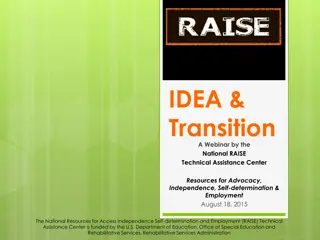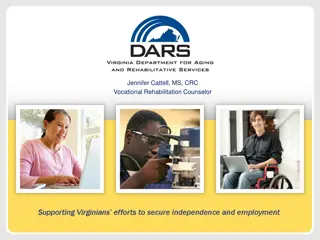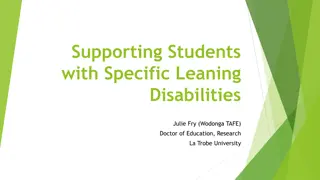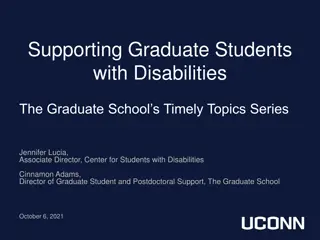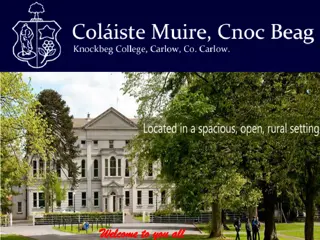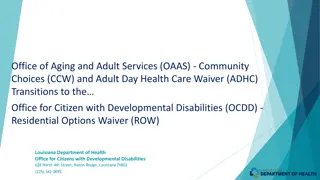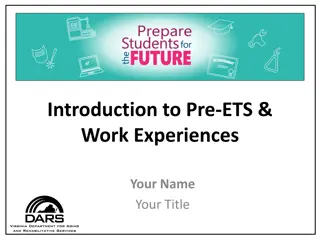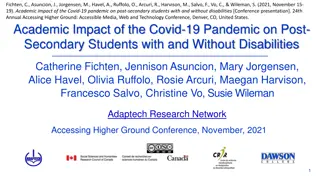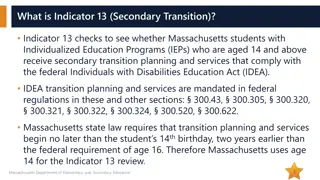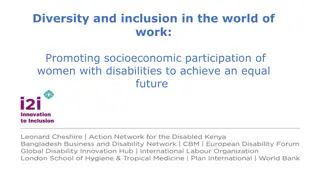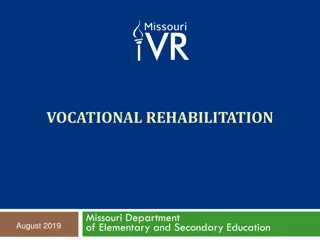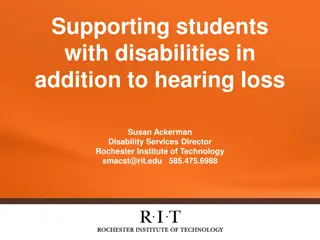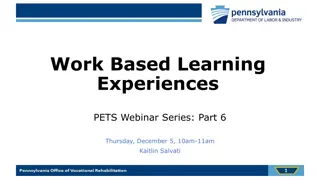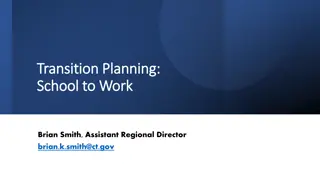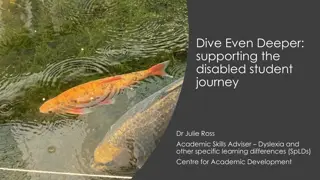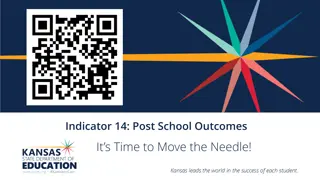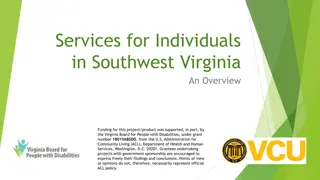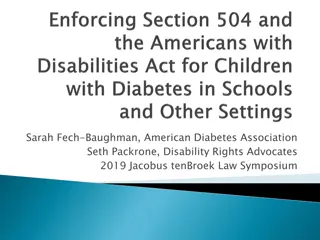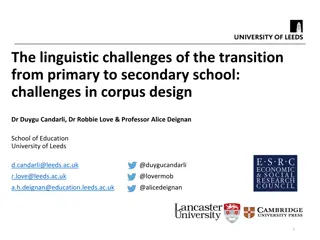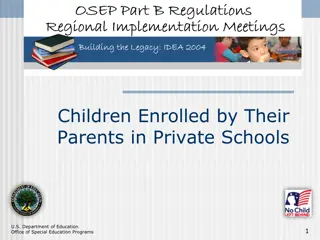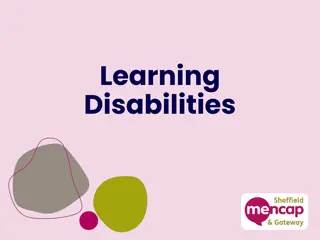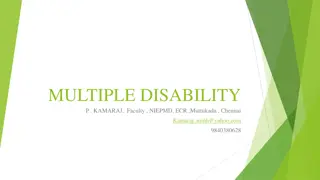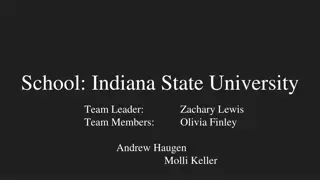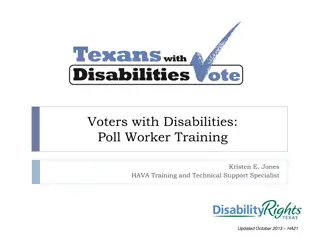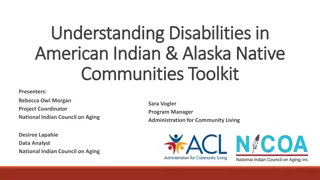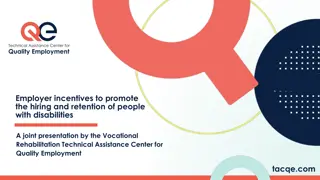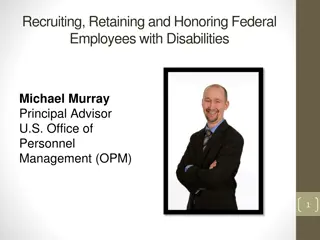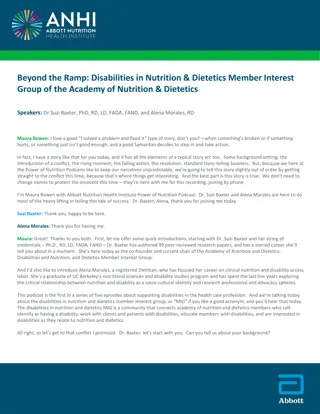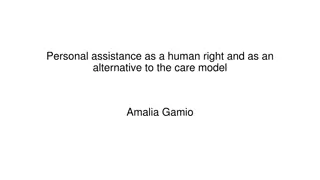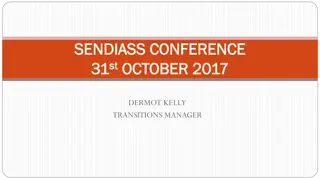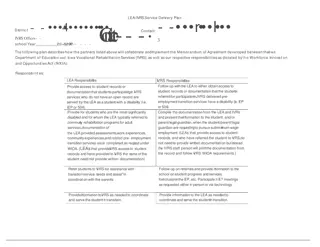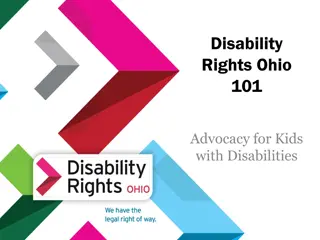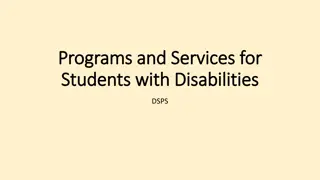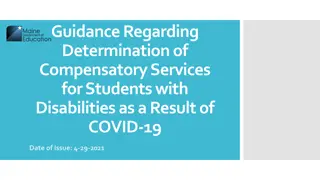Understanding Secondary Transition Services for Students with Disabilities
Exploring the concept and importance of secondary transition services in the context of students with disabilities, focusing on the Individuals with Disabilities Education Act (IDEA) 2004. The article delves into the requirements for transition services, postsecondary goals, and examples of students like Ryan and Isabel who benefit from such services for their educational and vocational aspirations.
Download Presentation

Please find below an Image/Link to download the presentation.
The content on the website is provided AS IS for your information and personal use only. It may not be sold, licensed, or shared on other websites without obtaining consent from the author. Download presentation by click this link. If you encounter any issues during the download, it is possible that the publisher has removed the file from their server.
E N D
Presentation Transcript
What is secondary transition? What is secondary transition? The term transition services a coordinated set of activities child with a disability that: transition services means coordinated set of activities for a Is designed process and facilitate post education; employment (including supported employment); continuing and adult education; adult services; independent living or community participation. within improving the achievement of the child . . . to facilitate the child s post- -school vocational to be results the academic from school education; a results- -oriented academic school to integrated oriented process . . . focused on improving and functional school activities functional achievement activities, including postsecondary to to movement movement from
The Individuals Disabilities Education Act (IDEA) 2004 The Individuals with Disabilities Education Act (IDEA) 2004 with Beginning not later than the first individualized education program (IEP) to be in effect when the child is 16 14 must include: 16 (Oklahoma (Oklahoma has has designated designated the the age age of of 14) ) and updated annually thereafter, the IEP Appropriate measurable postsecondary goals based upon age-appropriate transition assessments related to training/education living skills training/education, employment living skills (where appropriate). employment, and, independent independent
Ryan is a high school junior with a specific learning disability. Test scores indicate he reads on a fourth grade level and is on the fifth grade level in math. Ryan wants to go into the Air Force, like his father and older brother. Isabel is twenty-years-old. She is confined to a wheelchair due to the frequent seizures she experiences and her cerebral palsy. She also has a minor visual impairment. Isabel is a lively, caring student who aims to please. She enjoys shopping, and she loves to make gift baskets for her friends and family.
Each child, aged IEP, goal/vision listed on the top of the transition services plan page of the IEP. This postsecondary goal must address: Education/training Independent aged 14 have 14 and and above a above and on an postsecondary must Education/training Independent living and employment employment. living goals (as needed).
SAMPLE SAMPLE POSTSECONDARY POSTSECONDARY GOALS GOALS Ryan will join the Air Force and receive on-the-job training. He plans to live on base.
SAMPLE SAMPLE POSTSECONDARY POSTSECONDARY GOALS GOALS Within three months of graduation, Isabel will participate courses at the local Career Tech school. With the help of a habilitation training specialist (HTS), Isabel will implement her business plan for a home-based business of custom gift baskets. in/audit business development
The postsecondary goal should drive further development of the transition plan, including annual transition IEP goal(s) found on page two of the IEP. The annual transition IEP goal(s) must demonstrate the movement toward reaching the postsecondary goal(s).
Consider what annual transition IEP goal(s) will assist Ryan and Isabel in working toward their postsecondary goals. What academic areas do Ryan and Isabel need to improve upon? EXAMPLE Tinker Air Force Base one day per week as a part of the Work Study program. EXAMPLE possible Air Force occupations that he is interested in, based on research and results from his taking the ASVAB. EXAMPLE demonstrate the ability to balance a checkbook and reconcile financial accounts with 80% accuracy. EXAMPLE - Annual Annual Education/Training Education/Training Goal Goal: : Ryan will work on EXAMPLE- Annual Annual Employment Employment Goal Goal: : Ryan will report on 5 EXAMPLE Annual Annual Independent Independent Living Living Skills Skills Goal Goal: : Ryan will
EXAMPLE Isabel will demonstrate how to manage a personal income using a budget, 8 out of 10 times. EXAMPLE research 5 Web sites that tell how to start a gift basket business and report on the steps given . EXAMPLE Isabel will plan for her self-care (e.g., showering and eating), educational, and recreational activities, five days each week. EXAMPLE - Annual Annual Education/Training Education/Training Goal Goal: : Goal: : Isabel will EXAMPLE- Annual Annual Employment Employment Goal EXAMPLE Annual Annual Independent Independent Living Living Skills Skills Goal Goal: :
If the child is taught to alternate achievement standards, the IEP must also include short-term objectives or benchmarks for each goal. There must be at least two benchmarks should consider all of the child s needs and steps necessary to achieve the goal when writing short-term objectives and benchmarks. two short short- -term term objectives objectives or or benchmarks for each goal. Teachers
The coordinated assist the child in accomplishing the annual transition IEP goals. coordinated set set of of activities activities will These activities could be provided by the special general etc. special education general education education teacher, education teacher, teacher, parent, teacher, parent
For example, if a child was working toward becoming a welder, some coordinated activities might include learning (e.g., interviewing competitions shadowing, training Additional activities may include practicing vocabulary developing occupation coordinated center readiness skills r sum , competing using his shadowing, and training. activities provided building competitions using provided by learning job skills), and participating by the a his welding participating in the technology job readiness competing welding skills, in on technology center practicing skills, job on- -the skills in in job job the- -job practicing welding needed for vocabulary developing math occupation. specific math skills specific to to welding and the and skills needed for the
Coordinated Ryan Take the ASVAB Job shadow different positions at Tinker Visit Air Force recruiter Obtain driver s license Learn Air Force vocabulary Build resume Practice interviewing skills Open a checking/savings account at local bank Coordinated Activities Activities Isabel Get her food handler permit Job shadow at a local florist Visit local Career Tech Research entrepreneurship Learn keyboarding skills Open a checking/savings account at local bank
The course specific course name and not the general core area (e.g., Algebra I as opposed to Math). Courses should be specific to each child and demonstrate progression through the completion of their secondary education. course of of study study must include the
Ryan and Isabels Course In what courses should Ryan and Isabel enroll to reach their annual IEP goal(s) and postsecondary goal(s)? Ryan Core courses will be listed individually Auto Mechanics Introduction to Computer Keyboarding class Personal Finance Isabel Core courses will be listed individually Family and Consumer Science Introduction to Computer Keyboarding Business Math Ryan and Isabel s Course of Study of Study
Children and parents must be informed about the age of majority and transfer of rights by the time the child reaches 17 years 17 years of of age age. . In the case of a child reaching the age of majority, the notification of meeting will be addressed to the child and a copy will be provided to the parent(s).
Local educational agencies (LEAs) should inform parent(s) of their option to seek legal making decisions for their child upon the child reaching the age of majority. seek legal advice advice if they plan to continue
IDEA 2004 34 CFR 300.305 IDEA 2004 34 CFR 300.305 At the time of termination of eligibility due to graduation with a regular high school diploma; or because the child exceeds the age of eligibility, LEAs must provide the child with a summary his Academic achievement Functional performance recommendations on how to assist the child in meeting postsecondary goal(s). summary of of his or or her Academic achievement; and Functional performance, including her: : ; and
What should be considered? What should be considered? Test results and interpretations Accommodations and modifications Present levels Goals Documentation of disability and assessments
Self-advocacy skills Self-disclosure Soft Skills (e.g., self-management, responsibility, integrity, honesty, punctuality, sociability, working on a team)
Questions Questions
Secondary Transition Contacts Secondary Transition Contacts Ms. Anita Eccard, Associate State Director Ms. Janet Felton, Coordinator Ms. Monica McFarlin, Project Coordinator Ms. Candi Robinson, Technical Assistance Coordinator (405) 522 (405) 522- -3248 3248


